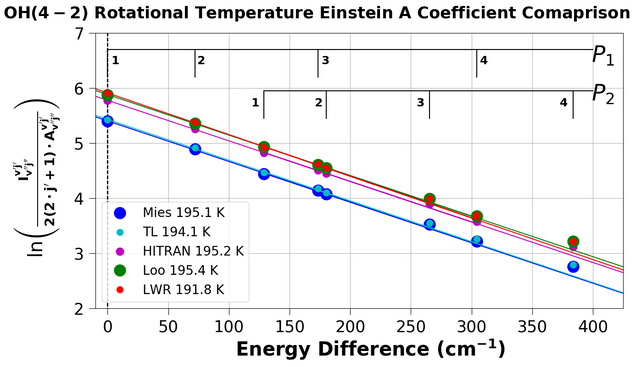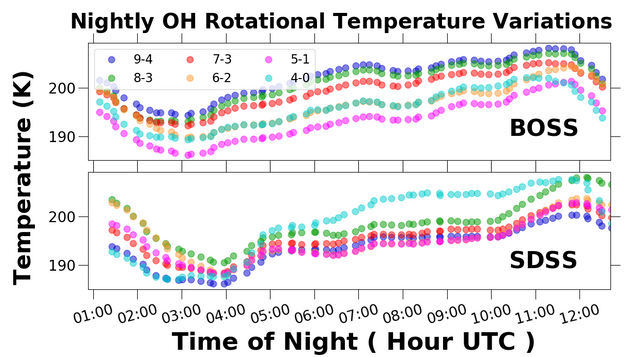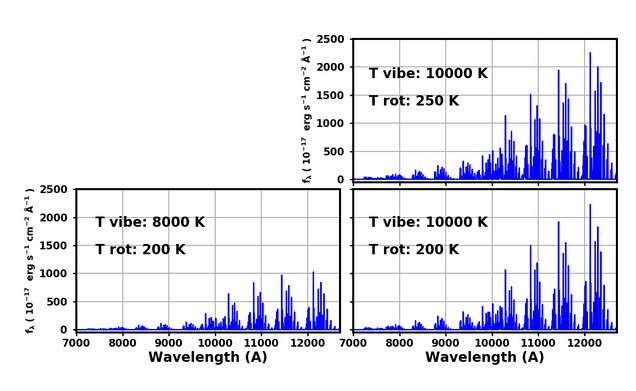OH Rotational Temperature
The rotational temperature of the OH molecule is used as a proxy for temperatures at the mesopause. Rotational temperatures are measured by fitting a line to the natural log of population versus rotational energy. The plot below is the measurement of the mean OH(v’=4) rotational temperature measured at Apache Point by the Apache Point Observatory Galactic Evolution Experiment (APOGEE).

The nightly variations in temperatures near the mesopause are primarily driven by variations in emission altitude. The plot below are the nightly mean rotational temperatures for the v’=9,8,7,6,5 and 4 vibrational levels as measured by the Sloan Digital Sky Survey (SDSS) and Baryon-Acoustic Oscillation Spectroscopic Survey (BOSS). The excited OH molecules are stratified by vibrational level and consequently are slightly different in temperature.

The annual variations in OH rotational temperature are driven by global circulation.

The OH spectrum is also characterized by a vibrational temperature. This is not a physical temperature, but instead represents the rate of OH production versus loss. The simulated spectra below varies rotational temperature in the vertical, and vibrational temperature in the horizontal. An increase in vibrational temperature significantly increases the emission intensity, and an increase in rotational temperature increases the intensity of the higher rotational levels.

For more detailed information about OH rotational temperatures, and its temporal variations see my manuscript at this link https://doi.org/10.1088/1538-3873/aae972.